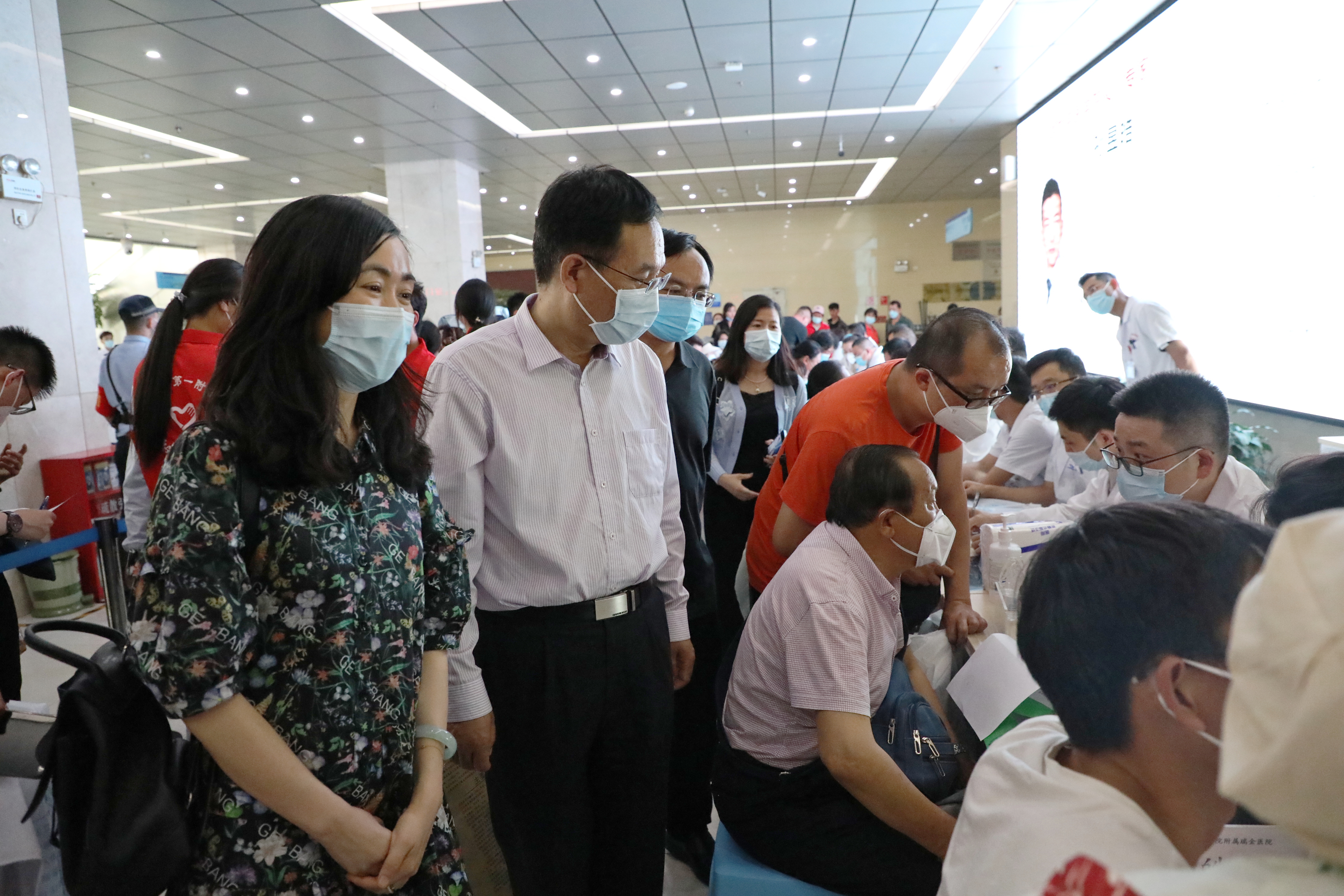Fudan Pediatric Innovative Precision Intervention Strategy Wins First Prize in Municipal Science and Technology Progress, and China adds 500000 new rare disease cases annually
Rare diseases have become an important issue affecting the health of children in China. Data shows that there are about 20 million rare patients in China, with an annual increase of 500000. The vast majority of rare diseases can cause death and disability, leading to a heavy social and economic burden. Led by Professor Zhou Wenhao from the Affiliated Pediatric Hospital of Fudan University, the team has completed the establishment and promotion of precise intervention strategies for rare neonatal diseases, and won the first prize of Shanghai Science and Technology Progress Award in 2022.
What is a rare disease? Expert introduction: rare diseases are diseases with an incidence of less than 1/10000. At present, there are more than 7000 rare diseases in the world, 50% of which occur in the newborn period. For a long time, there have been obvious bottlenecks in the treatment of rare diseases. Firstly, diagnosis is difficult. 65.9% of doctors are not familiar with rare diseases, and the average diagnosis time is 4.26 years, with an overall misdiagnosis rate of 42%; Secondly, treatment is difficult, with 95% lacking targeted treatment or approved drugs, and 30% of rare disease patients dying before the age of 5. Ultimately, rare diseases lack rapid, accurate, and efficient systematic diagnostic techniques, as well as precise intervention strategies from experience to evidence.
Zhou Wenhao led the team to tackle the project, targeting the core difficulties in the development of rare diseases in newborns. He established a complete and effective precision diagnosis and treatment system, including fast and complete molecular diagnosis and personalized precision treatment processes, fundamentally changing the existing empirical decision-making difficulties.
The reporter learned that the team took the lead in establishing a high-throughput sequencing molecular diagnostic technology platform for newborns, carrying out the China Neonatal Genome Project, and after seven years and three major technological breakthroughs, achieving artificial intelligence analysis and phenotype genotype association of all mutation types; The team simultaneously establishes a complete data analysis and interpretation process, greatly improving the rapid and accurate diagnosis of rare genetic diseases in newborns.
Expert introduction: The new rare disease diagnosis system has three highlights. Firstly, a 24-hour rapid diagnosis of high-risk children significantly improves the success rate of rescue; Secondly, multi-dimensional comprehensive diagnosis can reduce trial and error costs and increase the diagnostic rate by 15%; Thirdly, artificial intelligence automatically identifies mutations, reducing the diagnosis time for each case from 1 hour to 10 minutes. Nowadays, this diagnostic system has been promoted in 80 comprehensive hospitals and pediatric specialty hospitals nationwide, with clinical applications exceeding 100000 cases. Over 10000 cases of pediatric patients have directly changed clinical diagnosis and treatment decisions, improving the diagnostic level of rare diseases in newborns nationwide.

The team also based on real data from a large cohort of rare diseases in newborns, following the model of "constructing large cohorts and finely managing sub cohorts", fully presented the overall disease spectrum and phenotype genotype associations of rare diseases in newborns, helping to achieve accurate diagnosis and treatment.
It is reported that this model is based on a large cohort of rare diseases in newborns and applies the established molecular diagnostic technology platform to establish the largest phenotype and genetic database of rare diseases in newborns in China. The database is applied in clinical practice to identify genetic high-risk groups and recommend clinical genetic testing to determine the cause. At the same time, precise intervention and medication have been used. Up to now, 2107 difficult children have been followed up and treatment strategies have been adjusted.
Based on a large cohort of rare diseases in newborns, the team has developed a set of precise diagnosis and treatment strategies that run through screening, diagnosis, and treatment. They have established a newborn screening strategy and formed a consensus among Chinese experts in genetic screening of newborn diseases in 2021 to guide the nationwide screening work.
Zhou Wenhao revealed that although the advancement of genetic testing technology has greatly promoted the diagnosis of rare diseases, the overall diagnosis rate of rare diseases is still only maintained at the level of 30% -50%. The new pathogenic genes are still the core content for improving diagnostic rates and improving treatment strategies. The team discovered a series of new pathogenic genes, clarifying the causes of over 2000 rare diseases in children with unknown diagnoses. Through the establishment of non-human primate animal models and in-depth mechanism research, a new mechanism of hereditary encephalopathy was discovered, laying the foundation for effectively finding intervention targets.
This series of achievements from the Affiliated Pediatric Hospital of Fudan University for rare diseases in newborns have established a medical system that includes fast and complete molecular diagnosis, personalized and precise treatment processes. The research has reached the leading domestic and international levels, and through the construction of a neonatal rare disease treatment alliance system, it has covered and promoted multiple national pediatric specialty hospitals, receiving high attention and evaluation from peers at home and abroad.

So far, the team has published 179 high-level research papers based on this project, with a maximum of 173 citations per paper. They have written 4 industry consensus papers, authorized 4 invention patents, and 5 software copyrights, laying a solid foundation for precise diagnosis and intervention of rare diseases in children in China.
Supported by the Shanghai Municipal Science and Technology Commission's Science Popularization Project




